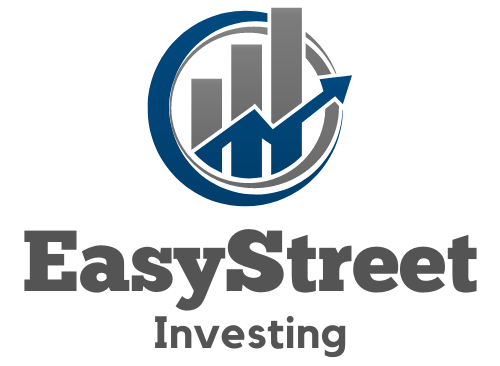In the quest for robust returns, high-yield investing stands out as a thrilling avenue. But without the right tools and resources, navigating this landscape can turn from promising to perilous in no time. We’re diving into the essentials that discerning investors harness to snag those above-average payouts. From real-time analytics to deep-dive research platforms, you’ll learn how to equip yourself for success. Expect a treasure trove of insights on making informed decisions that could lead to substantial gains.
Are you itching to identify investments with the most enticing yields? You’ve come to the right place. We’ll explore the must-haves that every yield-hungry investor needs at their fingertips. Think of it as your toolkit for tapping into high-return opportunities. We’ll touch on market analysis software, dividend trackers, and risk assessment tools—all designed to maximize your income potential. Get ready to uncover secrets that could help you outperform the market while keeping risks at bay. Let’s embark on this journey toward smarter, more lucrative investing. To further enhance your investment strategy, staying updated on highyield investment trends analysis will be crucial. This knowledge not only helps you spot profitable opportunities but also equips you to navigate the ever-changing market landscape. By integrating these insights into your toolkit, you can make informed decisions that align with your financial goals.
Important Highlights
1. Investors should prioritize dividend-paying stocks as a core component of a high-yield investment strategy. These stocks not only provide regular income but also offer the potential for capital growth. By selecting companies with a stable dividend payout history and solid financial health, investors can benefit from consistent cash flow and reduce their exposure to market volatility.
2. Incorporating bonds into an investment portfolio is essential for diversification and risk management. High-yield bonds, in particular, can offer better returns than traditional bonds, albeit at higher risk levels. It’s advisable to assess the credit ratings of these bonds and consider factors such as interest rate changes, inflation, and economic cycles when making investment decisions. For more details on bond investing, refer to reliable resources like the U.S. Securities and Exchange Commission.
3. Utilize real estate investment trusts (REITs), which allow investors to gain exposure to real estate markets without owning physical properties. REITs often deliver attractive yields through property rentals, sales, or mortgage lending and are legally required to distribute a majority of their taxable income to shareholders. They serve as an efficient tool for yielding income while offering liquidity that direct real estate investments typically lack.
4. Make use of investment tools and platforms, such as robo-advisors or brokerage services that provide access to high-yield opportunities across various asset classes including stocks, bonds, and alternative investments. These platforms offer valuable analytics, research reports, and automated strategies that can assist in optimizing portfolios for higher returns.
5. Stay informed about tax implications related to high-yield investments by consulting with tax professionals or using reputable tax planning software. Understanding how dividends, interest income, and capital gains are taxed can significantly influence net investment outcomes. Proper tax planning ensures that investors keep more of their earned income and comply with all relevant tax regulations.
Understanding High-Yield Investment Options
High-yield investments offer greater returns compared to traditional low-risk instruments. These include dividend-paying stocks, high-yield bonds, real estate investment trusts (REITs), and master limited partnerships (MLPs). Diversify your portfolio by selecting a mix of these assets to balance potential risks with rewards. Additionally, consider incorporating highyield commodity investment strategies into your portfolio, as they can provide exposure to tangible assets that often appreciate during inflationary periods. By understanding the dynamics of different commodities, you can further enhance your investment potential while mitigating some of the inherent risks associated with more traditional options. This approach not only adds diversification but also positions you to capitalize on market fluctuations.
Financial Analysis Platforms
Leverage sophisticated financial analysis platforms such as Bloomberg Terminal or Morningstar. These services provide in-depth data on market trends, company financials, and economic indicators essential for making informed decisions on high-yield investments.
Dividend Tracking Tools
Use dividend tracking tools like Dividend.com to monitor payouts and schedules. These resources help you identify companies with strong dividend histories and forecast future distributions, ensuring a steady income stream from your investments.
Risk Assessment Software
Employ risk assessment software to evaluate the volatility and credit risk of high-yield investment options. Understanding the risk profile of each asset is crucial in creating a balanced high-yield investment strategy.
Economic Indicators and Market Research Reports
Stay abreast of economic indicators such as inflation rates, employment statistics, and GDP growth through government websites like the Bureau of Economic Analysis. Additionally, comprehensive market research reports from firms like McKinsey & Company can shed light on industry-specific trends affecting your investment choices.
Bond Rating Agencies
Refer to bond rating agencies like Moody’s or Standard & Poor’s for assessments of bond creditworthiness. Their ratings can guide you in choosing bonds that align with your desired risk level while still offering attractive yields.
Investment News Websites and Financial Blogs
Frequent reputable investment news websites such as Investopedia or The Motley Fool for expert insights into high-yield investing strategies. Following trusted financial blogs also keeps you informed about emerging opportunities and market sentiments.
Tax Implications Considerations
Navigate the complex world of tax implications related to high-yield investments with tools like TurboTax’s Investment Tax Calculator. Efficient tax planning can significantly affect net returns from high-dividend stocks or interest-bearing bonds.
The Role of Financial Advisors
Consider enlisting a certified financial advisor who specializes in high-yield investments. They can offer personalized advice tailored to your financial goals and risk tolerance levels, optimizing your investment approach. They can also help you navigate the complexities of the investment landscape, ensuring that you understand the various options available. Additionally, many advisors provide resources such as seminars or articles where highyield investment strategies explained can deepen your understanding. This support can empower you to make informed decisions and potentially increase your returns. A certified financial advisor can also help you implement effective risk management in investments, ensuring that your portfolio is balanced and responsive to market fluctuations. They may provide insights into various asset classes and strategies to mitigate potential losses while maximizing returns. This proactive approach can enhance your confidence and empower you to make informed decisions in your investment journey.
Online Investment Communities
Join online investment communities such as Bogleheads or Reddit’s r/investing to discuss strategies with fellow investors. Peer insights can be invaluable when evaluating various high-yield investment routes.
Selecting the Right High-Yield ETFs and Mutual Funds
Analyze high-yield exchange-traded funds (ETFs) and mutual funds that aggregate dividend stocks or junk bonds. Look into their performance history, management fees, and distribution rates before investing.
Crypto-Based Yield Opportunities
Dive into crypto-based yield opportunities if you have an appetite for higher risk ventures. Platforms like BlockFi allow investors to earn interest on cryptocurrencies, adding another dimension to the high-yield investment landscape.
Rentech Digital Dividend Payout Reports
Rentech Digital offers detailed dividend payout reports, which can be critical when assessing potential stocks for your portfolio focused on delivering regular income.
The Importance of Portfolio Rebalancing Tools
Maintain optimal asset allocation with portfolio rebalancing tools like Personal Capital’s software. Regularly adjust your holdings to stay aligned with your initial investment strategy and react appropriately to market changes.
The Emergence of Robo-Advisors in High-Yield Investing
Incorporate robo-advisors like Betterment for automated, algorithm-driven financial planning services that include high-yield investment options tailored to individual preferences without manual intervention.
Inflation-Protected Securities for High-Yield Portfolios
Add Treasury Inflation-Protected Securities (TIPS) to safeguard your portfolio against inflation while still pursuing higher yields than traditional savings accounts offer.
- Analyze Your Risk Tolerance Regularly?
- Evaluate Your Portfolio’s Performance Quarterly?
- Audit Interest Rates Compared To Market Averages?
- Diversify Across Various Asset Classes?
- Maintain An Emergency Fund Separate From Investments?
Frequently Asked Questions
What are the top tools for tracking high-yield investments?
Leading the pack for monitoring high-yield investments are platforms like Bloomberg Terminal and Morningstar. Both offer in-depth analytics, real-time data, and extensive research libraries to keep investors informed.
How important is risk assessment in high-yield investing?
Risk assessment is crucial. High returns often come with higher risks, so using tools like Value at Risk (VaR) calculators or credit rating reports from agencies like Moody’s or S&P can help gauge potential pitfalls.
Can I find high-yield opportunities without paying for expensive services?
Absolutely! Many online brokers provide free resources and screeners that can help identify stocks and bonds with higher yields. Additionally, educational websites and financial blogs often share valuable insights at no cost.
What should I look for in a dividend tracker?
Seek out a dividend tracker that updates regularly, offers customization for your portfolio, and provides historical dividend data. This helps you stay on top of payouts and adjust your strategy as needed.
Are investment apps reliable for high-yield investing?
Many investment apps are quite robust, offering real-time data, analysis tools, and even AI-driven advice. However, always check reviews and verify their credibility before relying on them for investment decisions.
How do I balance my portfolio with high-yield investments?
Diversification is key. Combine high-yield options with lower-risk investments. Tools like asset allocation calculators can be very helpful to maintain a balanced investment approach.
Is technical analysis beneficial for high-yield investors?
Technical analysis can spot trends and patterns that might not be obvious at first glance. It’s one piece of the puzzle that, alongside fundamental analysis, can guide your high-yield investment choices. By integrating technical analysis with a solid understanding of market fundamentals, investors can enhance their decision-making processes and minimize risks. The importance of fundamental analysis lies in its ability to provide insights into a company’s financial health, market position, and growth potential, ensuring a well-rounded investment strategy. Ultimately, combining these two approaches enables investors to make more informed choices in the pursuit of high yields.
What’s the role of news aggregators in high-yield investing?
Staying updated with market news is vital. News aggregators can provide a steady stream of relevant financial news so you can react promptly to market changes affecting your investments.
How does an economic calendar fit into high-yield investing strategies?
An economic calendar alerts you to events that could impact markets—like policy changes or earnings reports—allowing you to plan ahead and potentially capitalize on market movements.
Should I consider using robo-advisors for managing my high-yield portfolio?
If you’re looking for convenience and algorithm-based recommendations, robo-advisors can be a good fit. They manage portfolios based on predetermined criteria, which might include seeking out high-yield investments.
Closing Insights on High-Yield Investment Tools
In the quest for substantial returns, arming yourself with effective tools and resources is non-negotiable. Navigating the waters of high-yield investing requires both vigilance and knowledge—qualities fostered by having the right arsenal at your disposal. From insightful analysis platforms to real-time data feeds, each resource plays its part in sculpting a successful investment journey.
Savvy investors understand that diversifying their toolkit is just as important as diversifying their portfolio. Embrace technology but also stay grounded in solid research practices. As we continue to witness rapid advancements in financial tech, staying adaptable ensures you remain at the forefront of discovering lucrative opportunities within the realm of high-yield investing.

